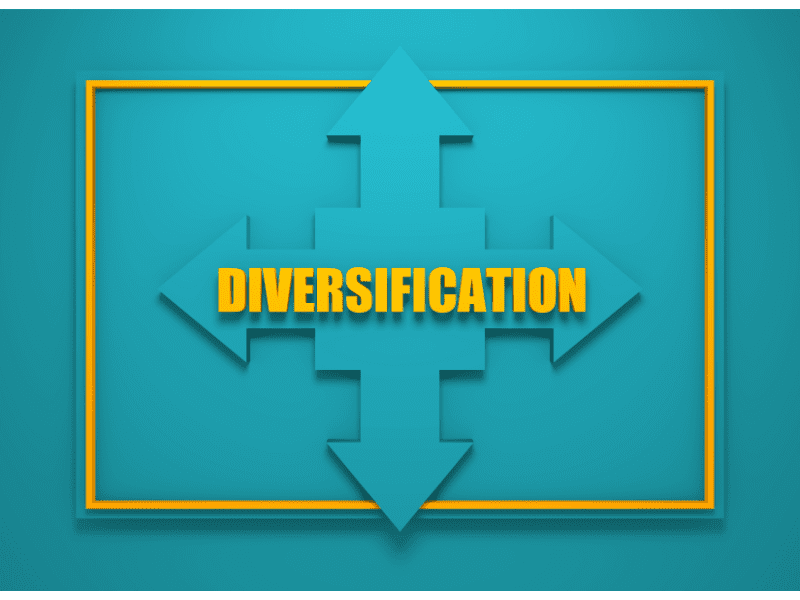In the fast-paced and often unpredictable world of investments, it’s crucial to have a diversified portfolio that can withstand the test of time. While stocks and equities may garner much of the spotlight, bonds play an equally important role in achieving a balanced investment strategy. welcome to the fascinating world of bond investments. Bonds, often considered the more conservative side of investing, offer a unique array of benefits and risks that can play a pivotal role in your financial portfolio.
In this comprehensive guide, we will walk you through the basics of bond investments, including various types of bonds, the potential benefits they bring, and the risks you should be aware of.
Whether you’re a novice investor eager to learn or someone looking to expand your financial knowledge, this guide is designed to provide valuable insights that will aid you in making informed decisions and achieving your investment goals. So, let’s dive into the world of bonds and discover how they can enhance your investment journey.
Table of Contents
Understanding the basics of bond investments

Bonds are essentially loans that individuals or organizations provide to various entities, such as governments or corporations, in exchange for periodic interest payments and the return of the initial principal amount at a specified maturity date. When you invest in bonds, you become a lender, and the issuer of the bond becomes the borrower.
It’s important to recognize that bonds are inherently different from stocks, where investors buy shares of a company. In the world of bonds, it’s all about lending money in exchange for a predictable income stream and the promise of getting your principal back at the end of the bond’s term.
These fundamental concepts form the backbone of bond investments and are crucial to grasp as you explore this financial realm.
Diversification is a key principle in investment strategy, and bond investments play a vital role in achieving a balanced and diversified portfolio. By incorporating bonds into your investment mix, you reduce the risk associated with having all your funds in a single asset class, such as stocks.
Bonds typically exhibit lower volatility compared to equities, which can help stabilize your portfolio’s performance, especially during periods of market turbulence. This stability is particularly important when you’re looking for a reliable income stream or protecting your assets.
In essence, bonds act as a stabilizing force, and including them in your investment portfolio helps mitigate risks and can lead to more consistent returns over time.
Different Types of Bonds

Government Bonds
United States Treasury bonds, often referred to as Treasuries, are one of the most secure investment options available. They are backed by the full faith and credit of the U.S. government, making them nearly risk-free. Treasury bonds come in various maturities, from short-term bills to long-term bonds, providing options for different investment horizons.
Municipal bonds, or munis, are issued by state and local governments. They are often used to finance public projects such as schools, highways, and infrastructure. Munis offer tax advantages, especially when you invest in bonds issued by your home state. They are generally considered low-risk investments.
Corporate Bonds
Investment-grade corporate bonds are issued by well-established companies with a strong track record of financial stability. They are considered relatively safe investments and typically offer lower yields compared to riskier bonds. These bonds are an excellent choice for investors looking for a balance between safety and return.
High-yield bonds, also known as junk bonds, are issued by companies with lower credit ratings. They come with higher yields to compensate for the increased risk. High-yield bonds can provide substantial returns, but they also carry a higher risk of default.
International Bonds
Sovereign bonds are issued by foreign governments and are often denominated in their local currency. They are typically considered safe investments when issued by stable governments. These bonds offer diversification opportunities beyond domestic investments.
Emerging market bonds come from countries with developing economies. They can be highly rewarding but also carry a higher level of risk due to economic and political instability. Investing in these bonds requires careful consideration and a high tolerance for risk.
Benefits of Bond Investments

- Stability and Predictability: Bond investments are renowned for their stability. Unlike the unpredictability of the stock market, bonds provide a fixed interest rate over a specified period. This predictability allows investors to plan for the future with confidence, making them an excellent choice for risk-averse individuals.
- Regular Income Stream: Investing in bonds can be compared to planting a financial seed that yields regular fruits. Bondholders receive periodic interest payments, offering a steady income stream. This dependable cash flow can be especially valuable for retirees or those seeking a consistent supplement to their income.
- Diversification of Portfolio: Achieving a well-balanced investment portfolio is akin to assembling a diversified team. Bonds play a crucial role in diversification by providing stability when other assets might be experiencing volatility. A mix of stocks and bonds can help cushion the overall impact of market fluctuations.
- Preservation of Capital: Capital preservation is a top priority for many investors. Bonds, particularly high-quality ones, are designed to return the principal amount at maturity. This feature ensures that a significant portion of the invested capital is shielded, providing a safety net for investors.
- Inflation Hedge: Inflation is a silent eroder of wealth, but bonds can act as a shield. While the fixed interest rate may not keep pace with inflation in every scenario, the consistent income from bond investments can help maintain purchasing power better than leaving funds idle.
- Accessible to All Investors: Bonds come in various forms and sizes, making them accessible to a broad range of investors. Whether you’re a novice investor or a seasoned financial veteran, there’s a bond investment option that suits your preferences and risk tolerance.
- Government Backing and Credit Ratings: Government and corporate bonds often come with the backing of the issuing entity. Government bonds, in particular, are considered low-risk due to the financial stability of the issuing government. Additionally, credit ratings provide valuable insights into the risk associated with corporate bonds, aiding investors in making informed decisions.
Risks in Bond Investing

- Interest Rate Risk: Interest rate risk is the most prevalent risk in bond investing. As interest rates rise, bond prices typically fall, and vice versa. This inverse relationship can impact the value of your bond investments. Long-term bonds are generally more sensitive to interest rate changes than short-term bonds.
- Credit Risk: Credit risk, also known as default risk, relates to the issuer’s ability to meet interest and principal payments. Bonds from financially stable issuers (with high credit ratings) have lower credit risk, while those from less stable issuers carry higher credit risk. Credit risk can result in a loss of principal or missed interest payments.
- Liquidity Risk: Liquidity risk arises when it’s challenging to sell a bond quickly without significantly impacting its price. Less liquid bonds may have fewer buyers and sellers, potentially leading to a price disadvantage when trading.
- Call Risk: Call risk occurs when an issuer decides to “call” or redeem a bond before its maturity date. When bonds are called, investors might have to reinvest the principal at lower interest rates, potentially affecting their expected returns.
- Reinvestment Risk: Reinvestment risk is associated with the interest or coupon payments you receive. If market interest rates decline when your bond matures or pays interest, you might not be able to reinvest your funds at the same rate. This risk can result in lower overall returns.
Understanding these risks is crucial for selecting bonds that align with your investment goals and risk tolerance. It’s wise to diversify your bond portfolio to mitigate specific risks.
Diversification in Bond Investing

One essential element of diversification is spreading your bond investments across different issuers. This approach mitigates the risk associated with an individual issuer’s financial health. By holding bonds from various issuers, you reduce the potential impact of a single issuer’s default.
Diversification extends beyond issuer selection to encompass various types of bonds. You can diversify by investing in government, corporate, municipal, or international bonds. Each type carries its own risk and return profiles, and spreading your investments across these categories helps minimize your overall risk.
Diversification goes hand in hand with a well-thought-out asset allocation strategy. Asset allocation involves determining how much of your investment portfolio should be allocated to bonds versus other asset classes, such as stocks or cash. It’s a critical aspect of risk management.
By diversifying your bond investments across issuers, types, and asset classes, you create a portfolio that’s better equipped to withstand market fluctuations and achieve your financial goals.
Building and Managing a Bond Portfolio

Before embarking on building a bond portfolio, you need to define your investment goals and assess your risk tolerance. Consider your financial objectives, time horizon, and how much risk you’re willing to accept. For example, if you aim for steady income and capital preservation, you may favor less risky bond investments.
Once you understand your investment goals and risk tolerance, it’s time to select the appropriate bonds for your portfolio. Your choice of bonds will depend on various factors, including your risk profile, time horizon, and market conditions. Consider the type of bonds that align with your objectives, be it government bonds for safety, corporate bonds for higher yields, or municipal bonds for tax advantages.
Building a bond portfolio isn’t a one-time endeavor; it’s an ongoing process. Regularly monitor the performance of your bond investments and assess whether they align with your goals. Market conditions and interest rate changes can impact your portfolio. Periodically rebalance your holdings to maintain the desired asset allocation and reduce risks.
Remember, the key to successful bond portfolio management is staying informed and adapting your strategy as needed. Bond investments should serve your financial objectives, and by proactively managing your portfolio, you can work towards achieving your goals with confidence.
Recap of the benefits and risks of bond investments
In summary, bond investments offer numerous advantages, including a reliable fixed income stream through coupon payments and yield to maturity. They tend to exhibit lower volatility compared to equities, making them a valuable tool for risk management.
Bonds also provide protection against inflation and can be instrumental in diversifying investment portfolios. However, they come with risks, including interest rate risk, credit risk, liquidity risk, call risk, and reinvestment risk.
It’s essential for investors to balance these benefits and risks, considering their financial objectives and risk tolerance when incorporating bonds into their investment strategies.
Seeking professional advice in bond investing is paramount, especially for beginners and those unfamiliar with the intricacies of the bond market. Financial advisors can provide valuable insights into selecting bonds that align with your financial goals and risk tolerance.
They can help navigate the complexities of bond ratings, maturities, and yields. Additionally, professionals can assist in building a well-diversified bond portfolio, balancing risks, and optimizing returns.
Their expertise can make a substantial difference in your bond investment journey, ensuring you make informed decisions and achieve your investment objectives.
Embarking on your bond investment journey can be a wise and rewarding choice for long-term financial stability. Bonds offer a dependable income stream, protection against inflation, and reduced volatility compared to stocks. By including bonds in your investment portfolio, you can achieve diversification and balance your risk.
So, don’t hesitate to explore the world of bond investments. Start today and secure your financial future with confidence and resilience. It’s an essential step towards building a robust and well-rounded investment portfolio.
Also Read: How to Assess and Manage Investment Risk


8 thoughts on “Bond Investments: A Complete Guide for Beginners”